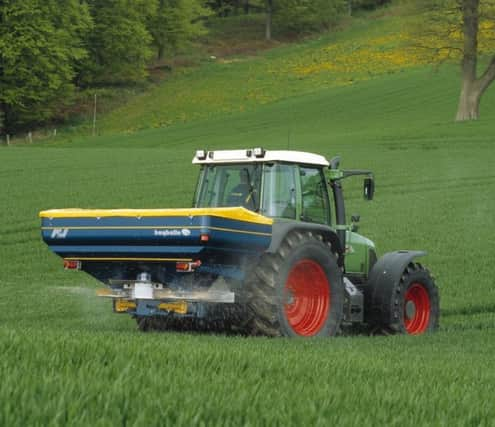Getting more from fertiliser


The early start to the winter and the difficulty of making silage in the latter part of last summer have combined to put pressure on feed stocks and farmers are looking anxiously for signs of an early spring.
An early turn-out and a good growing season to restore the depleted forage reserves would be very welcome – but cannot be guaranteed. A number of factors need to be in place to make the best of the great potential for grass growth through the spring and early summer.
Advertisement
Advertisement
A soil analysis report detailing the nutrient status of each field is a good first step. Hopefully the acidity of the soils will have been corrected by a suitable application of lime and conditions will be right to ensure a good response to nutrients applied. Slurry should be applied as soon as conditions allow and this should be factored in to the calculations to determine the nutrients required from chemical fertiliser.
Applying the right levels of chemical fertiliser required to meet the crop requirement will ensure that crop yields are optimised and that money is not wasted on nutrients which are not required. The other benefit of this type of precision farming is that emissions to air and waterways are also reduced. This will be a major consideration for farming in the future as government have indicated that environmental protection will be a key element of any farm support package when the UK withdraws from the European Economic Community.
There is now considerable interest in fertilisers which have lower environmental impact - particularly in terms of emissions of ammonia to the atmosphere. Products are now available which have been proven to be much more efficient in terms of nitrogen utilisation. Specially modified forms of urea have been developed which virtually eliminate emissions which are wasteful to farmers and damaging to the atmosphere. These enhanced products are commanding a premium of around £50 per tonne over ordinary urea but the improved efficiency of nitrogen delivery more than outweighs the cost.
The fertiliser markets are fairly stable at the minute with supply and demand reasonably balanced both at a global and a European level. Prices for most products are not showing much movement although demand for urea and Di-ammonium Phosphate (DAP) has firmed the trade on these commodities.
Advertisement
Advertisement
Locally merchants are reporting a slow start to 2018 following significant movements to farm in Autumn of last year. There have been signs of demand building up through February with a lot of business still to be done in March.